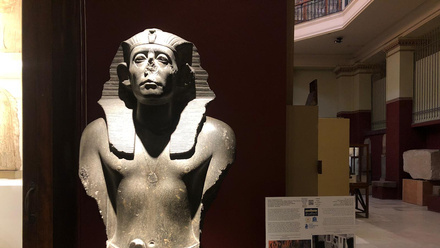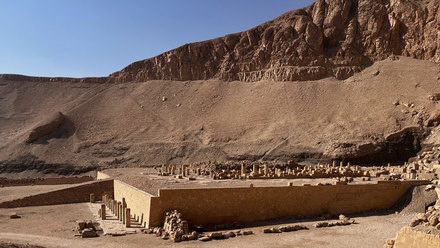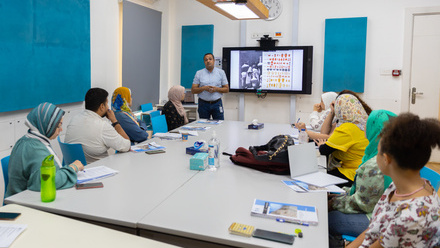Qubbet el-Hawa Research Project
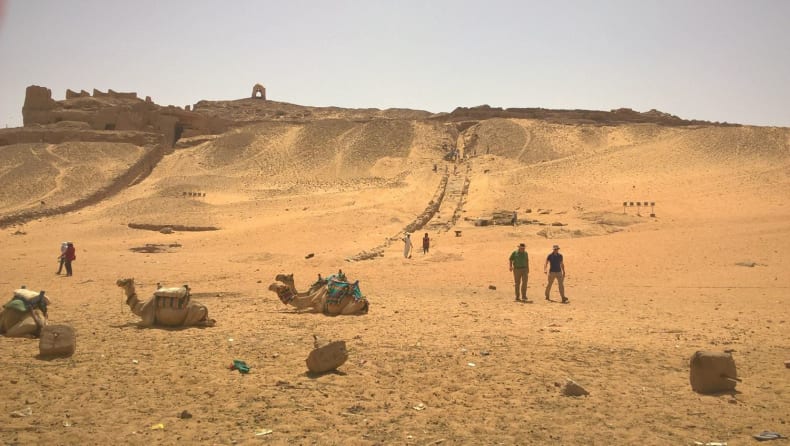
Qubbet el-Hawa, central necropolis showing the concession of QHRP below the 1st terrace, looking West
The necropolis of Qubbet el-Hawa (engl. dome of the winds) is located in West-Aswan, south of the Nubian village of Gharb Aswan. What looks like a huge sand dune covering a massive formation of Nubian Sandstone is home to one of the most densely occupied cemeteries of ancient Egypt, dating from c. 2500 BC to Roman Times. The main part of the site holds burials from the Old Kingdom to the New Kingdom.
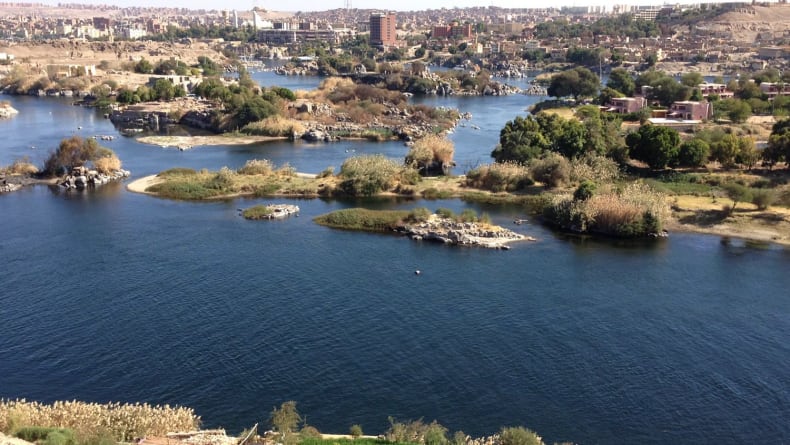
During the Old Middle Kingdom, social stratigraphy in the cataract region was reflected by distinct burial sites, including a cemetery on the (then) eastern island of Elephantine for the lower classes (unpublished), the lower necropolis of Qubbet el-Hawa for the administrative elite (researched by QHRP), and the upper terraces of Qubbet el-Hawa for the elite (published in Edel, E. 2008). Looking east with the southern tip of the island of Elephantine on the left.
While at least the causeway of Khunes leading up to tomb QH 34h and the first terrace was known to the French expedition following Napoleon’s Egyptian military campaign (1798-1801), Qubbet el-Hawa first caught the interest of British archaeologists in 1885 when General Francis Grenfell explored the site. Only 15 years later, Lady Cecil started excavating at the site.
The central part of the necropolis is made of four levels of rock-cut tombs. The first, top layer, located underneath the tomb of Sheikh Ali Abu el-Hawa, consists of a small number of tombs of modest appearance (Grenfell tombs) while further below, the quality of the standing rock provided for lavish rock-cut tombs created by the administrative elite of the 1st Upper Egyptian Nome. Governors of Elephantine who amassed riches through expeditions into and trade with neighbouring Lower Nubia occupied the major part of the central section of the necropolis and were buried within the 1st terrace during the Old Kingdom, 1st Intermediate Period, and the Middle Kingdom, accessible via the causeway of Khunes. Previous scholars such as Labib Habachi (1946-1952) and Elmar Edel (1959 – 1984) exclusively focussed on tombs from the 1st terrace. In 2008, the number of tombs identified at Qubbet el-Hawa had reached 209. However, the area below the 1st terrace of rock-cut tombs and the lower necropolis reaching the ancient flood plain has not been researched before 2016.
In 2016, the Egypt Exploration Society Qubbet el-Hawa Research Project identified a second level of tomb-building activity, protected by a retention wall and accessible via a causeway (site B). The discovery of these two monumental buildings led the QHRP to assume a 2nd terrace of tombs, a theory which is currently further explored. Covering a large part of what is now called the Lower Necropolis of Qubbet el-Hawa (site C), super structures of currently nine mastaba tombs have been identified until 2019 as subsequent research halted due to COVID-19 and travel restrictions. These tombs are accessible by a grid system consisting of narrow roads that once gave access to open tomb courts. Up until 2019, the spaces between individual and double mastabas were cleared as part of intra-marginal context assessment which identified the use of the site between the Old Kingdom and Middle Kingdom.
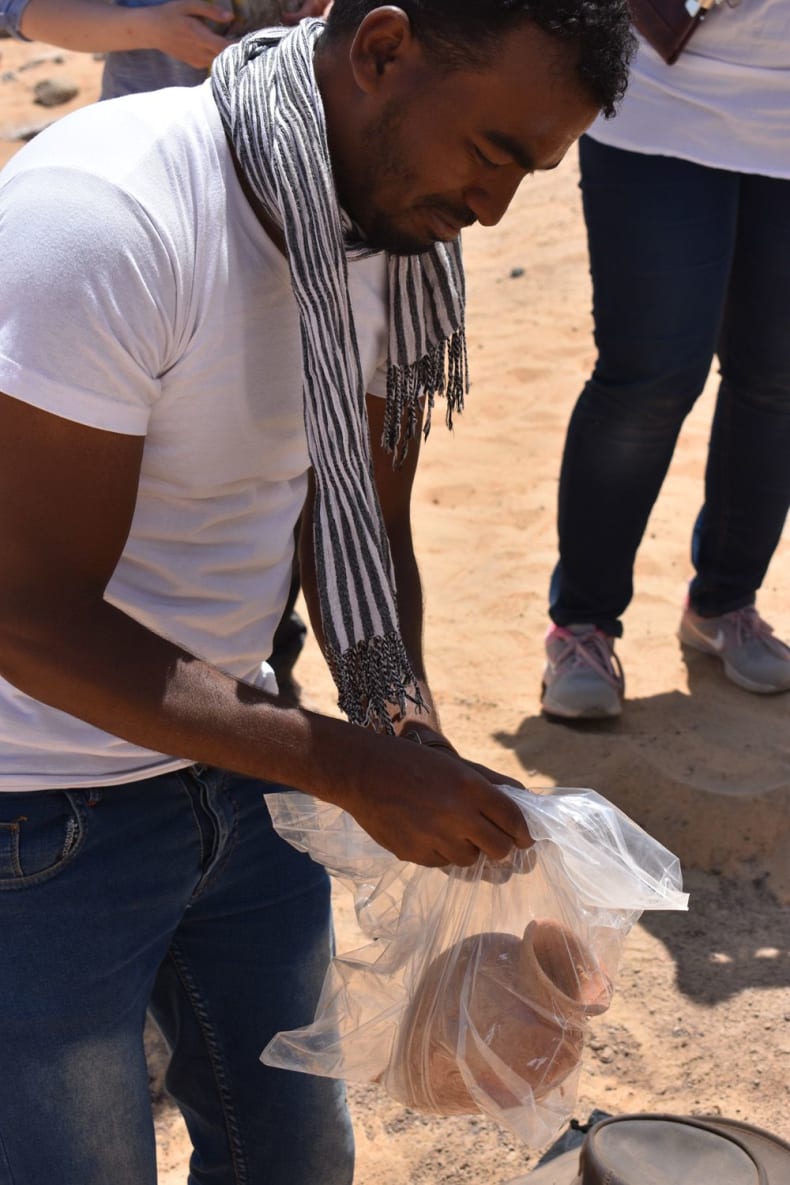
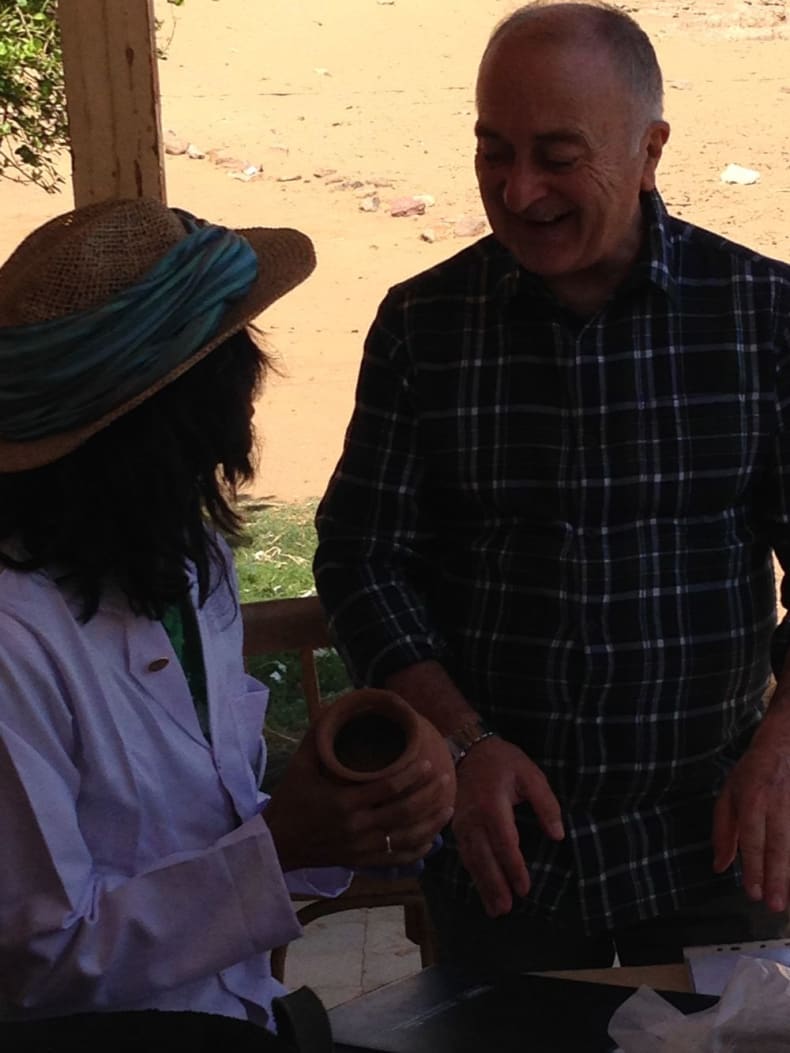
Left: Mission member, archaeologist Said Hindi, recovers an intact pot including contents; right: Tony Robinson (Channel5) and Eman Khalifa discuss a complete vessel after discovery in 2018.
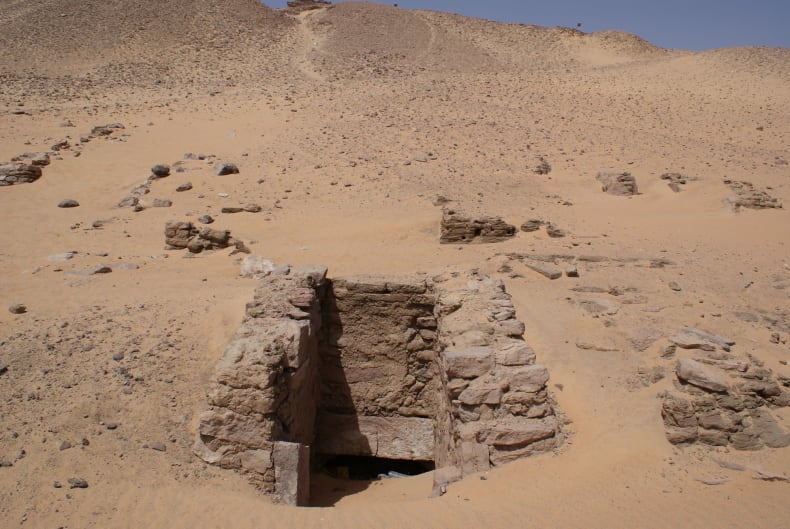
Remains of the super structure of tomb 3C01a in the Lower Necropolis after cleaning in early 2016
Further to the north and within the northern border of the QHRP’s concession, the causeway of Sarenput I’s tomb (QH 36) was discovered (site D). With a length of 132 meters, Sarenput’s I causeway was built during the early stages of the construction of his tomb and included elaborate decoration in both sunk relief (inside) and raised relief (outside), both found in situ. It is the longest of all six causeways known today, three of which have been discovered by QHRP between 2016 and 2019. The headstone which marks the eastern extension of this causeway shows the scene of driving a bull up the causeway to Sarenput’s I tomb.
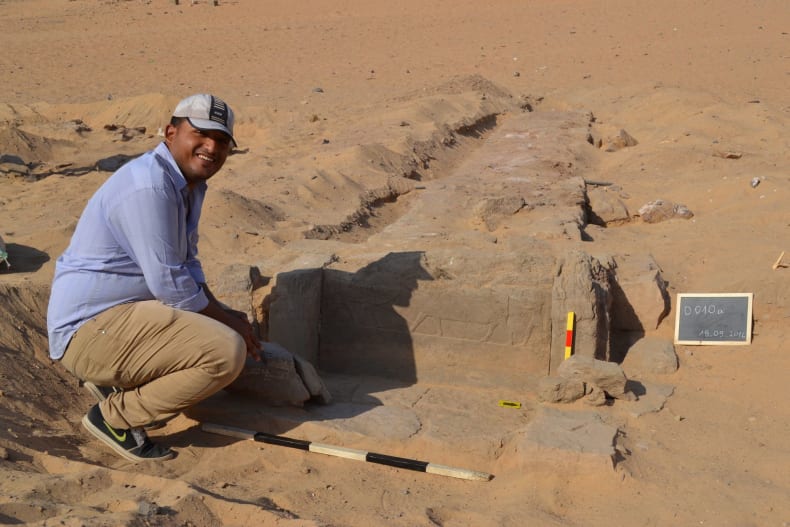
Happy faces all around when the eastern extension of the causeway of Sarenput I was discovered (site D). We want to thank Mohamed Abd el-Raziq from the Aswan Inspectorate for his help and support.
Future research will focus on the clearing of the 2nd terrace, causeways found within the concession (site B, D and E), as well as the documentation of the causeway of Khunes and the Lower Necropolis (site C). This includes further research on the site’s infrastructure to characterise how an ancient Egyptian necropolis was actually used and frequented by the non-administrative elite, a level of ancient Egyptian society that still remains largely elusive in the Aswan region. While causeways of provided for efficient tomb building and accessibility, in the long run served as memory lanes for those who engaged with the deceased in a way archaeology, sadly, so often is unable to address.
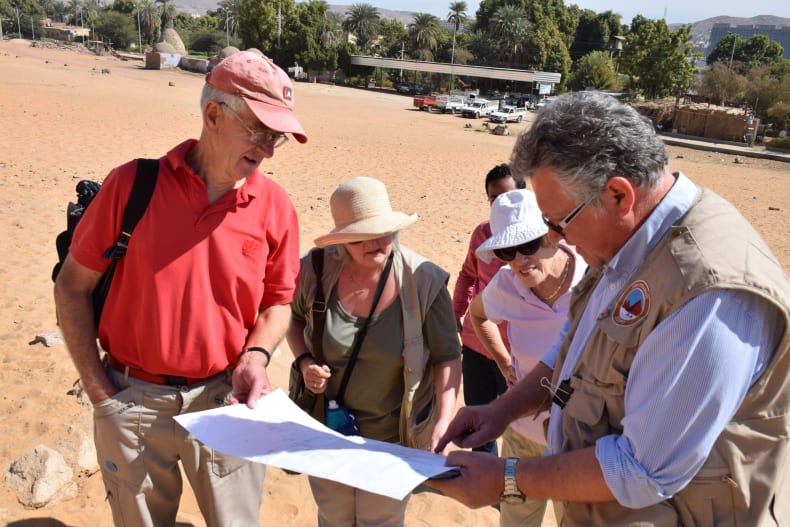
Members of the EES visiting the excavations in 2016.
Further reading
Edel, E. 2008. Die Felsgräbernekropole der Qubbet el-Hawa bei Assuan. Paderborn.
Bommas, M. 2016. ‘Qubbet el-Hawa, 2016’, Journal of Egyptian Archaeology 102, 23-40.
Bommas, M. 2017. ‘Displaying social mobility during the time of Senwosret I’, Egyptian Archaeology 51, 26-29.
Bommas, M. 2020. ‘Qubbet el-Hawa, 2019’, Journal of Egyptian Archaeology 106, 17-36 (incl. ceramic analysis by E. Khalifa)
E. Khalifa/ S. Abd Elrahim, Identification of Vessel Use and Explanation in Production Techniques From the Old to the Middle Kingdom: organic residue analysis, fabric and thermal characterization of pot sherds from Qubbet el-Hawa, Aswan, Egypt, in: Archaeometry 62.6, 2020, 1115-1129.

